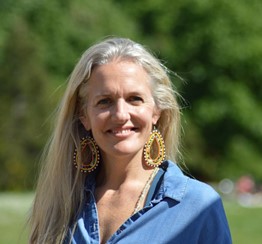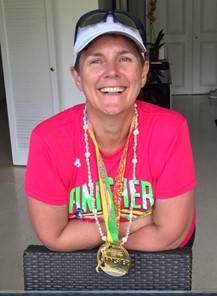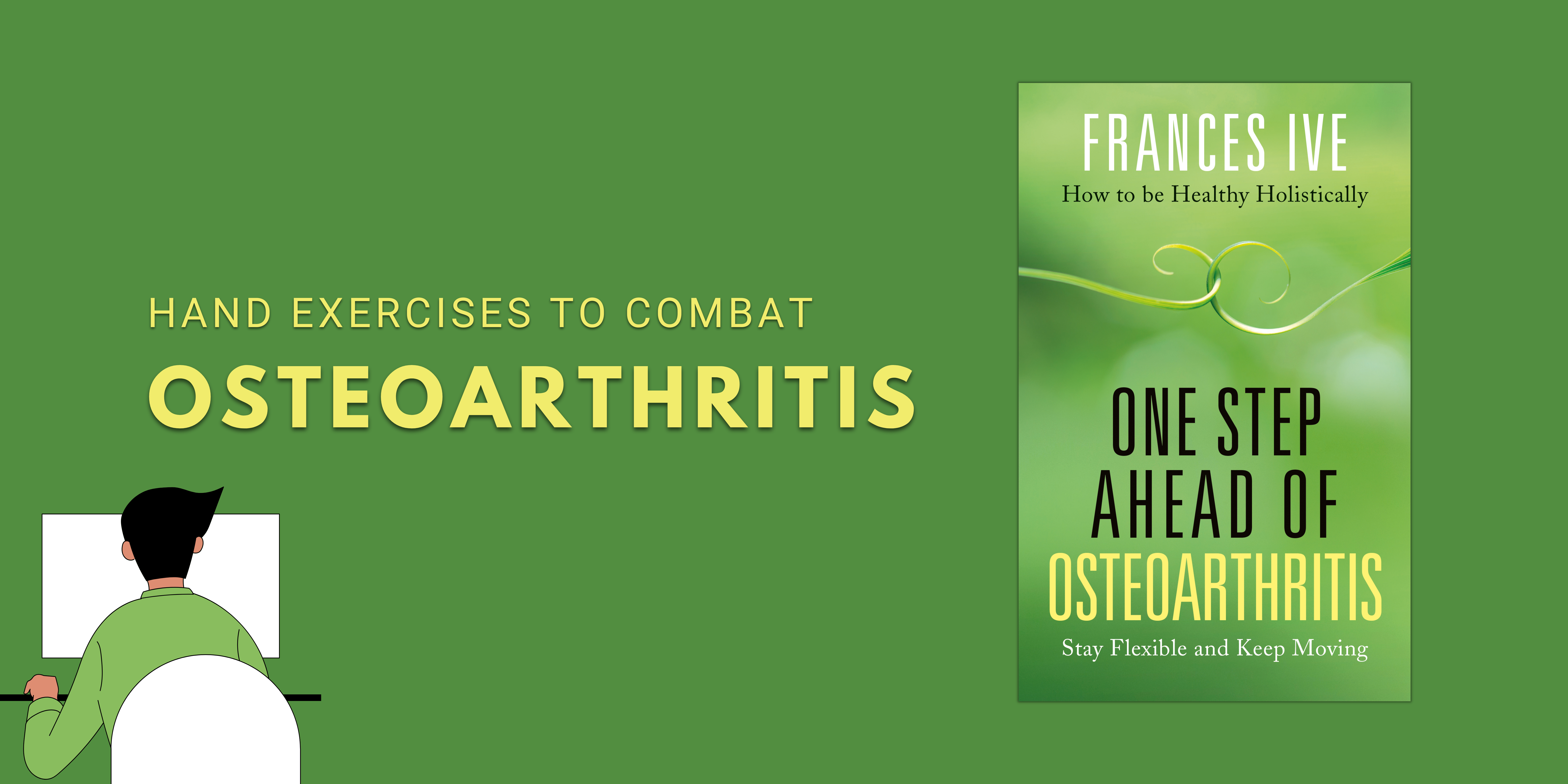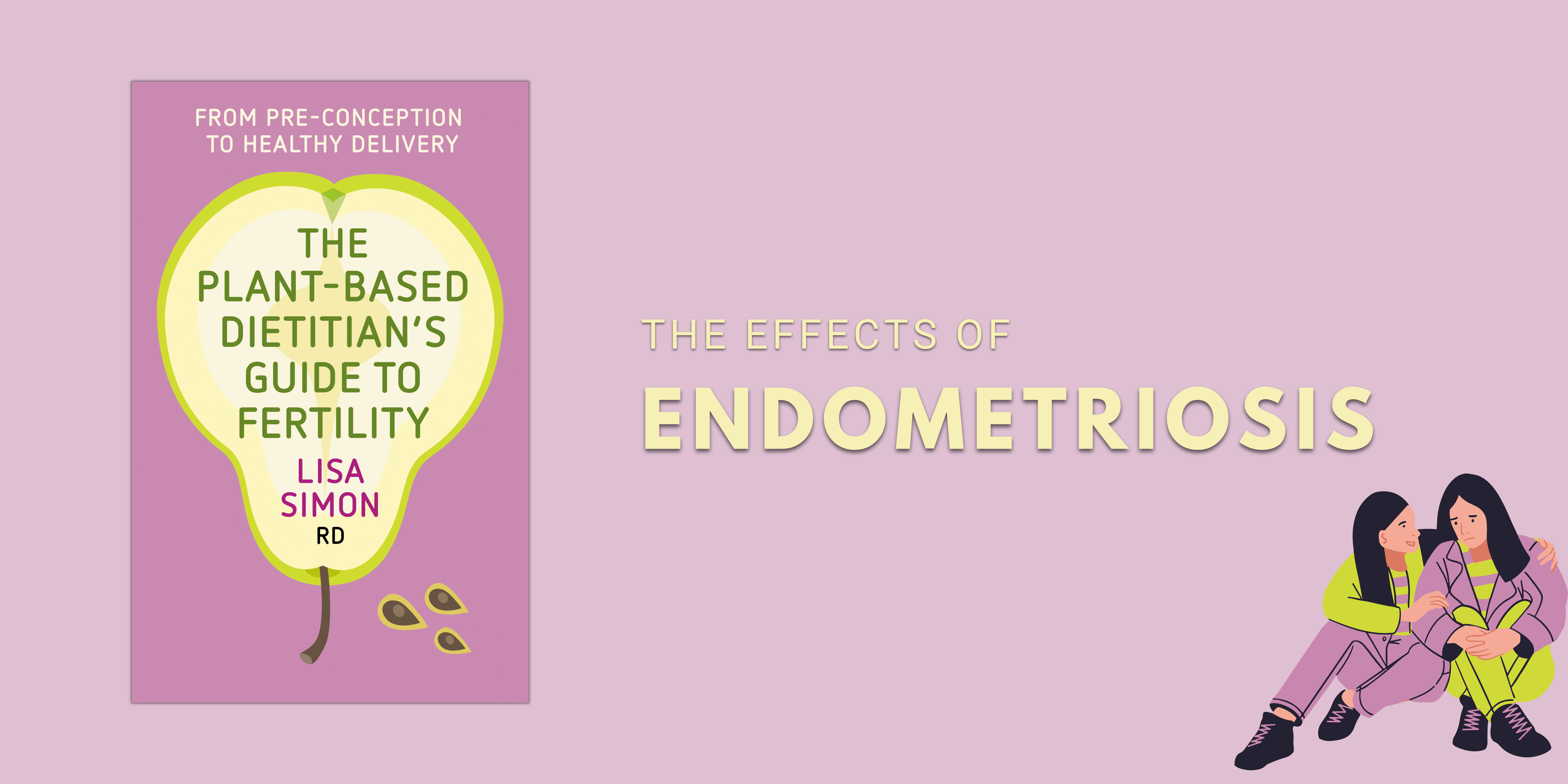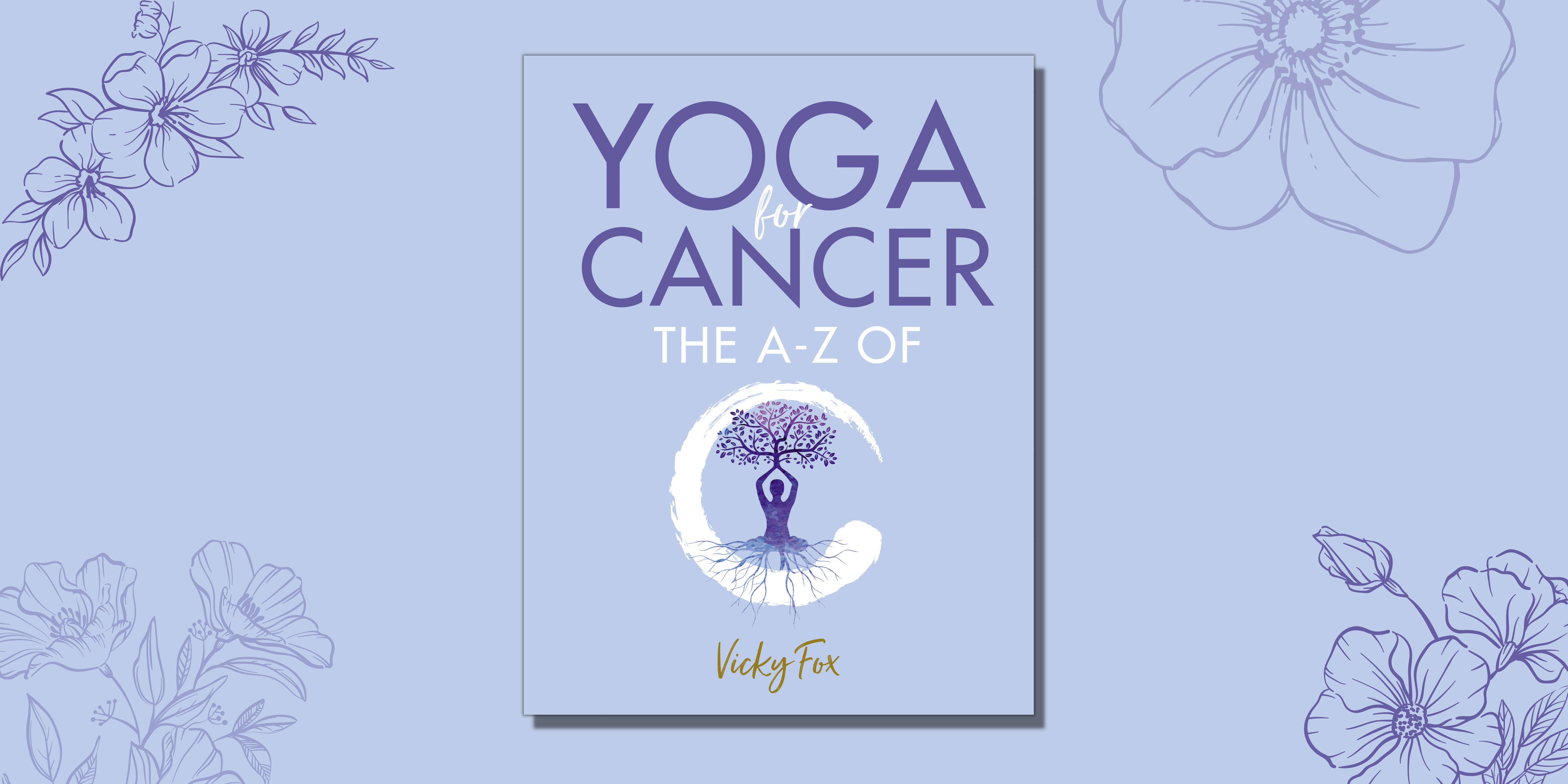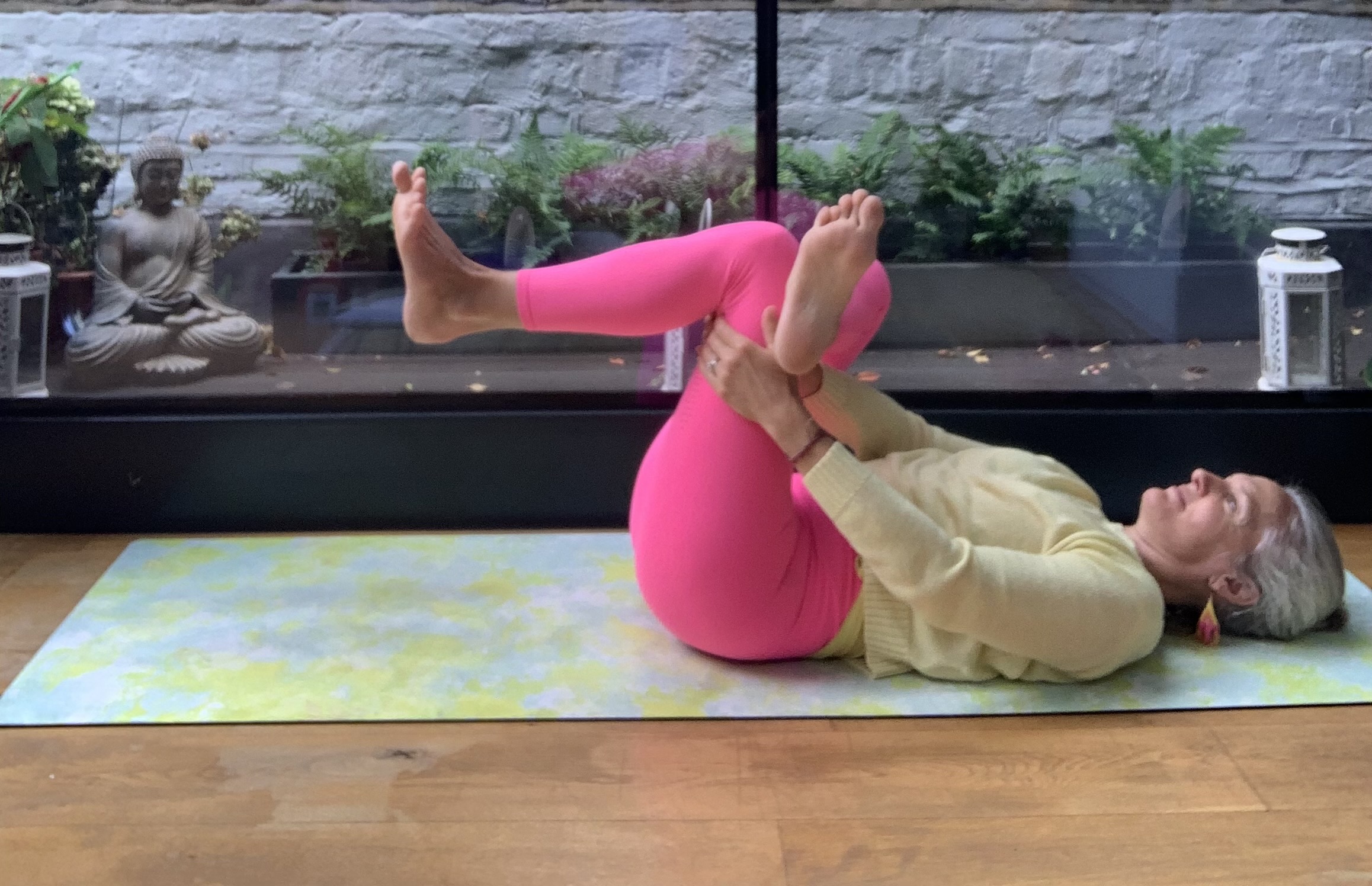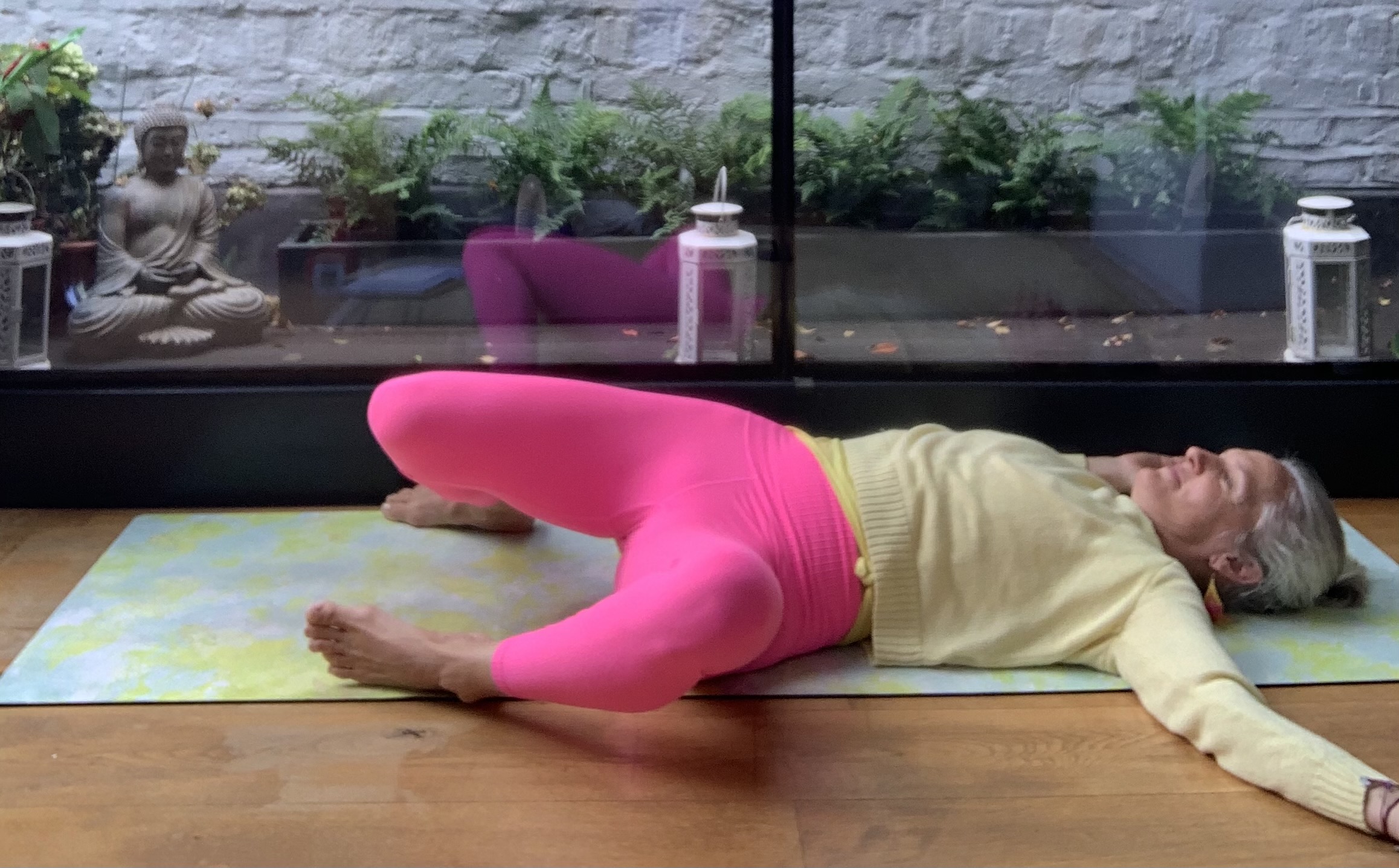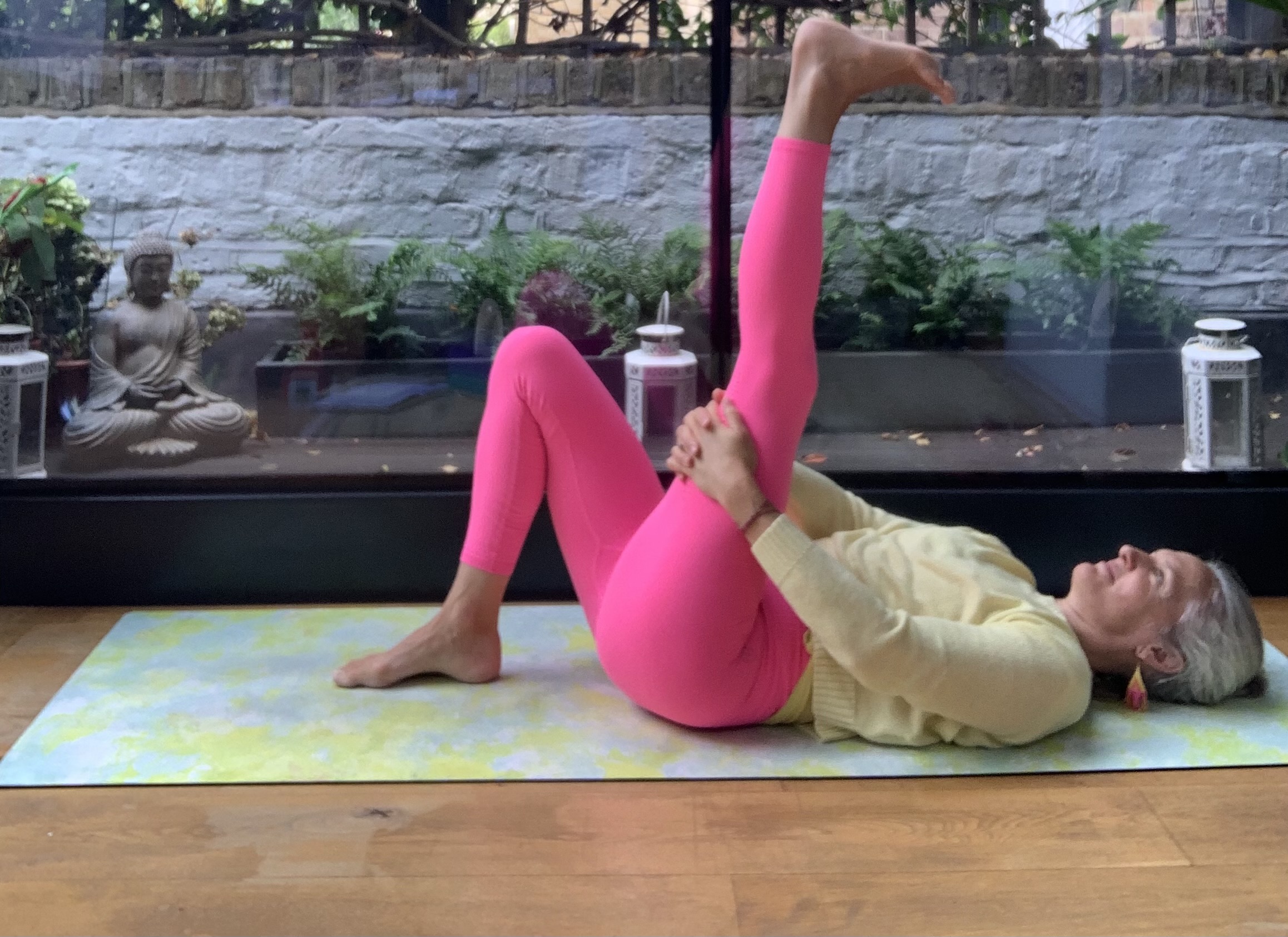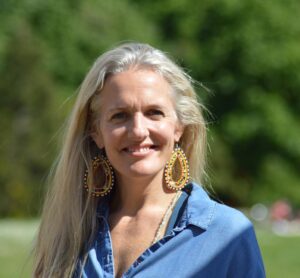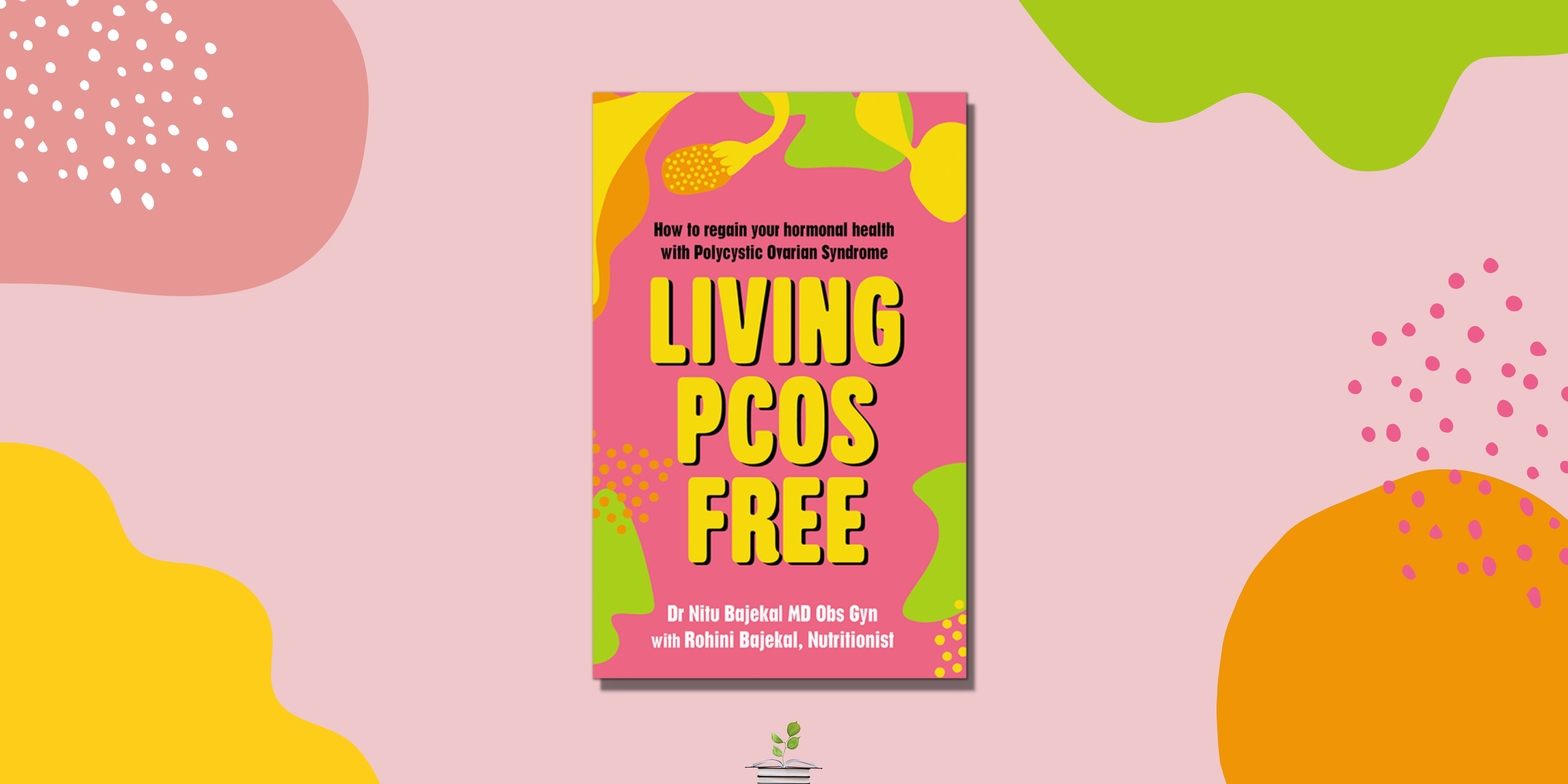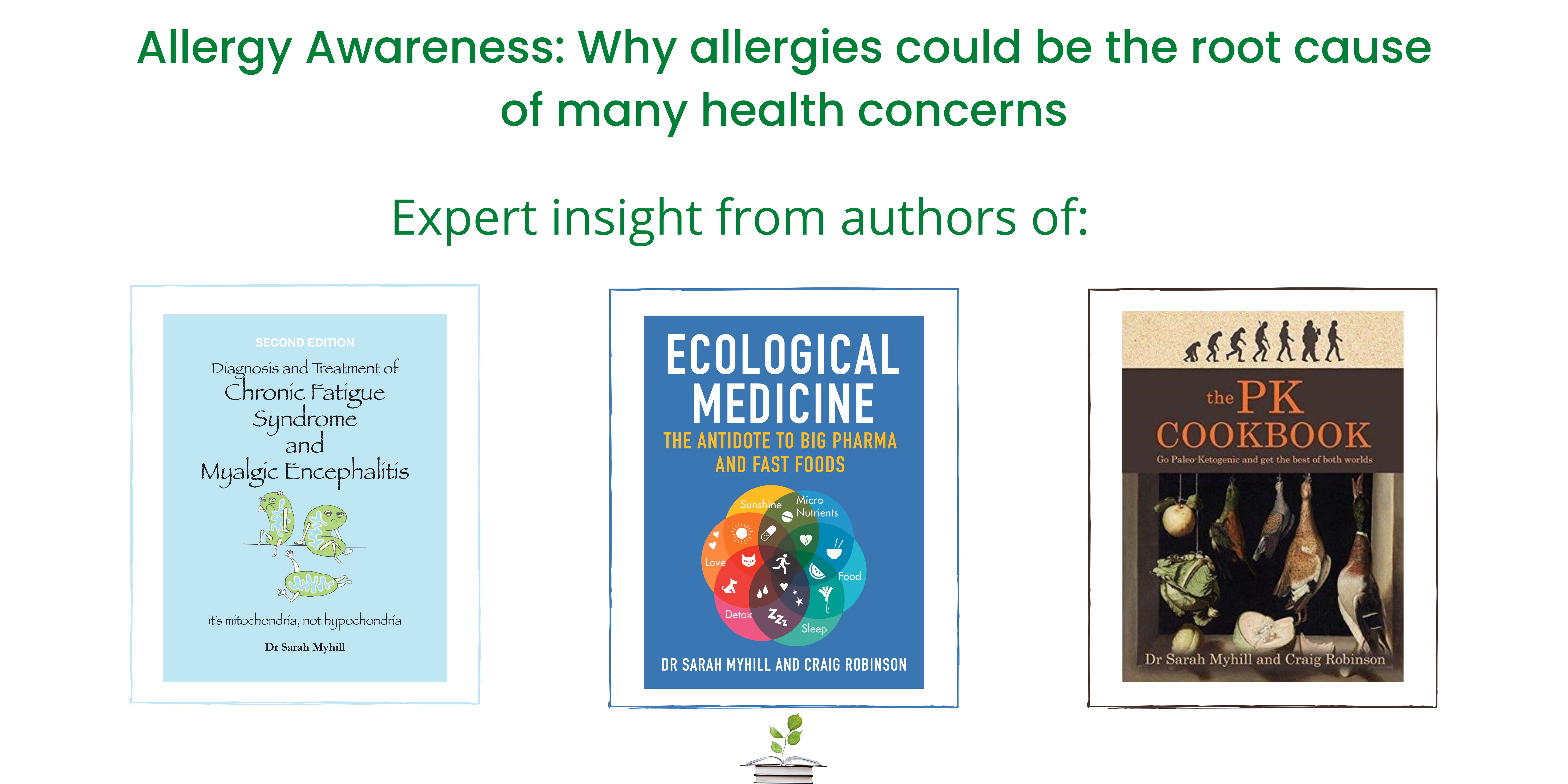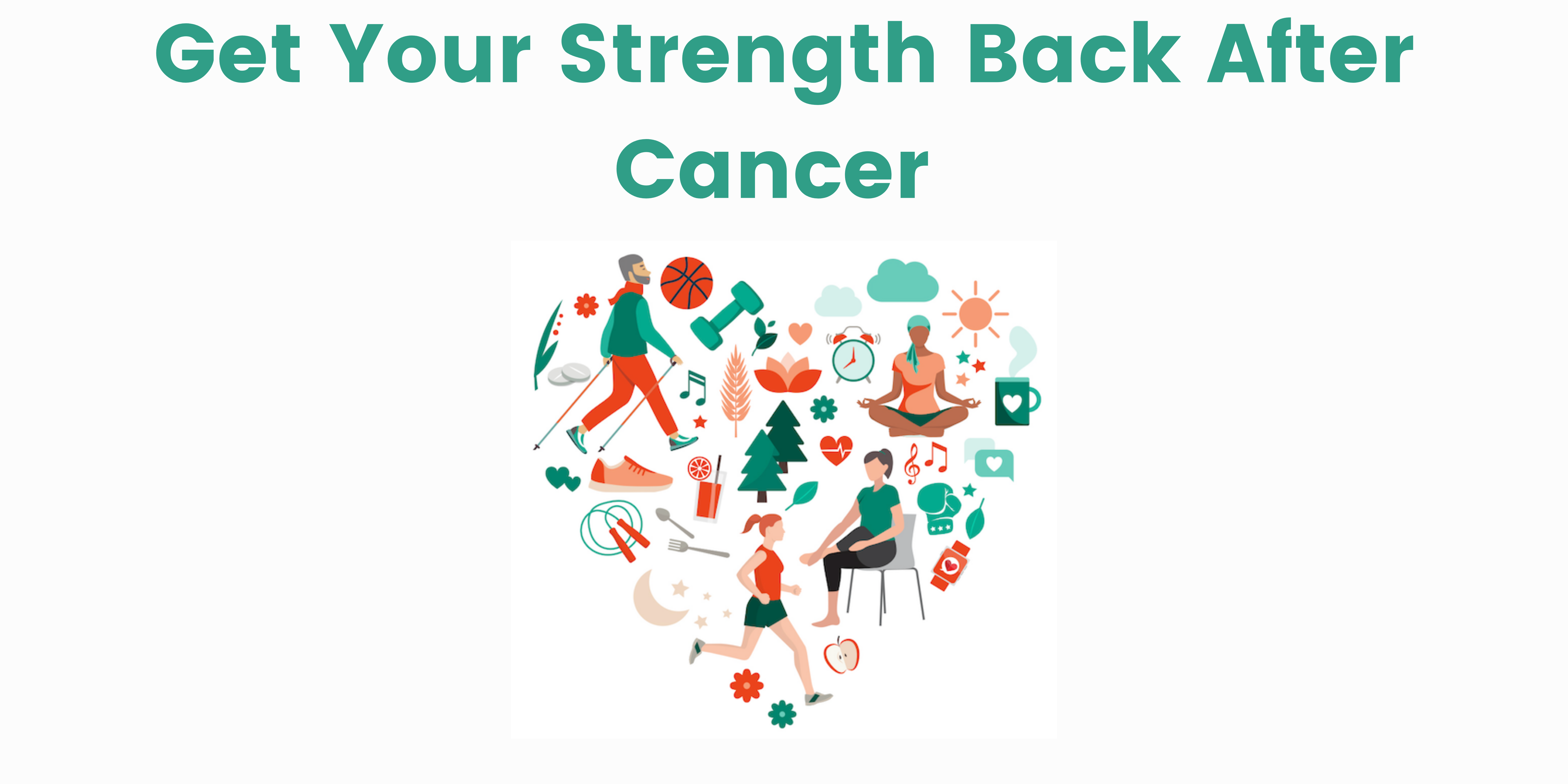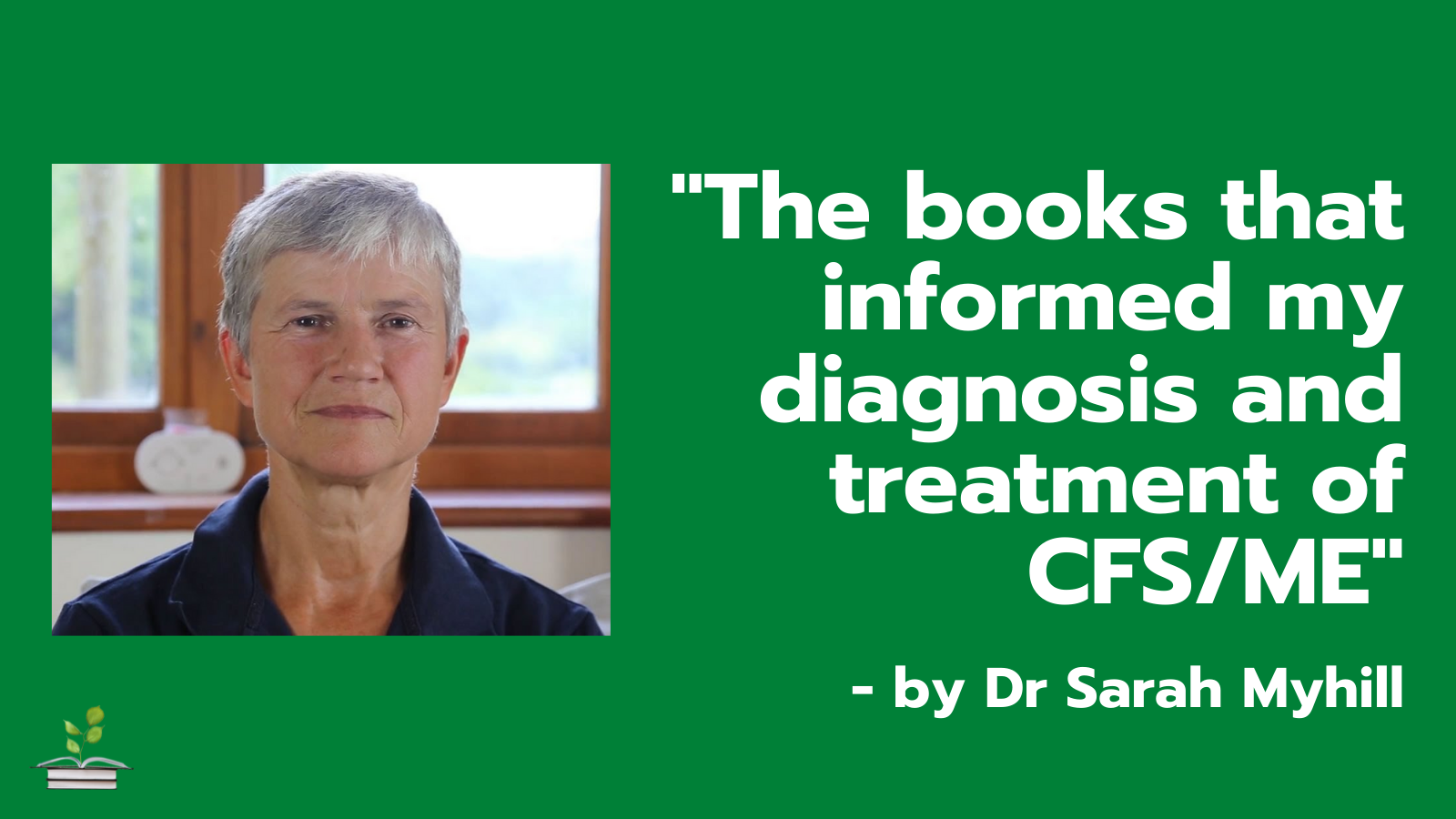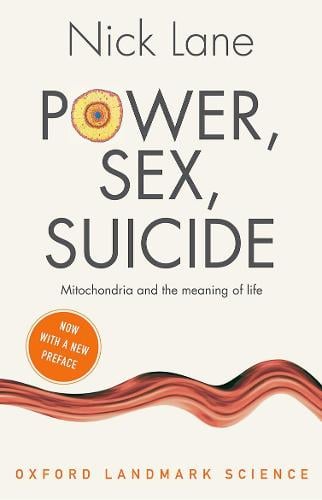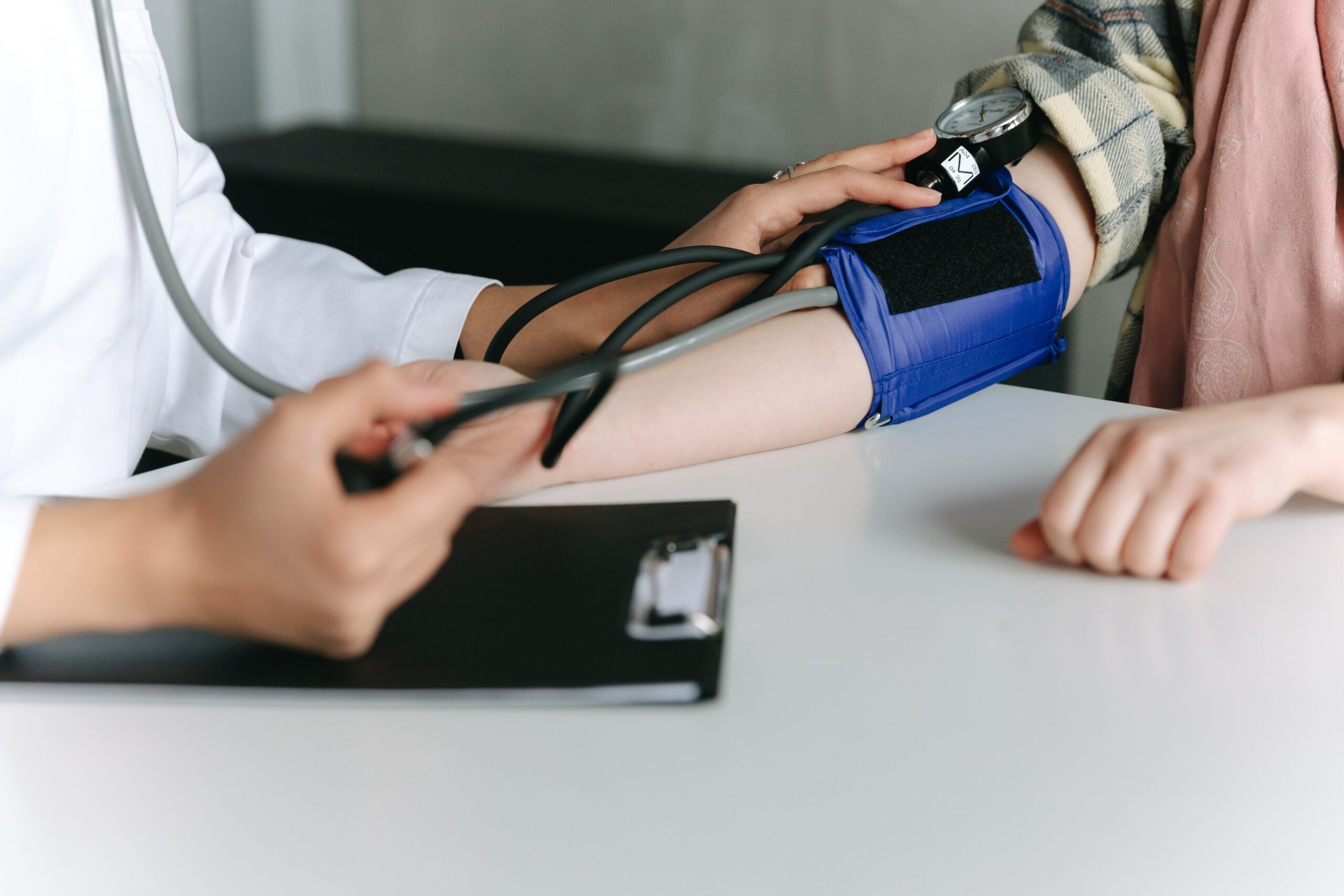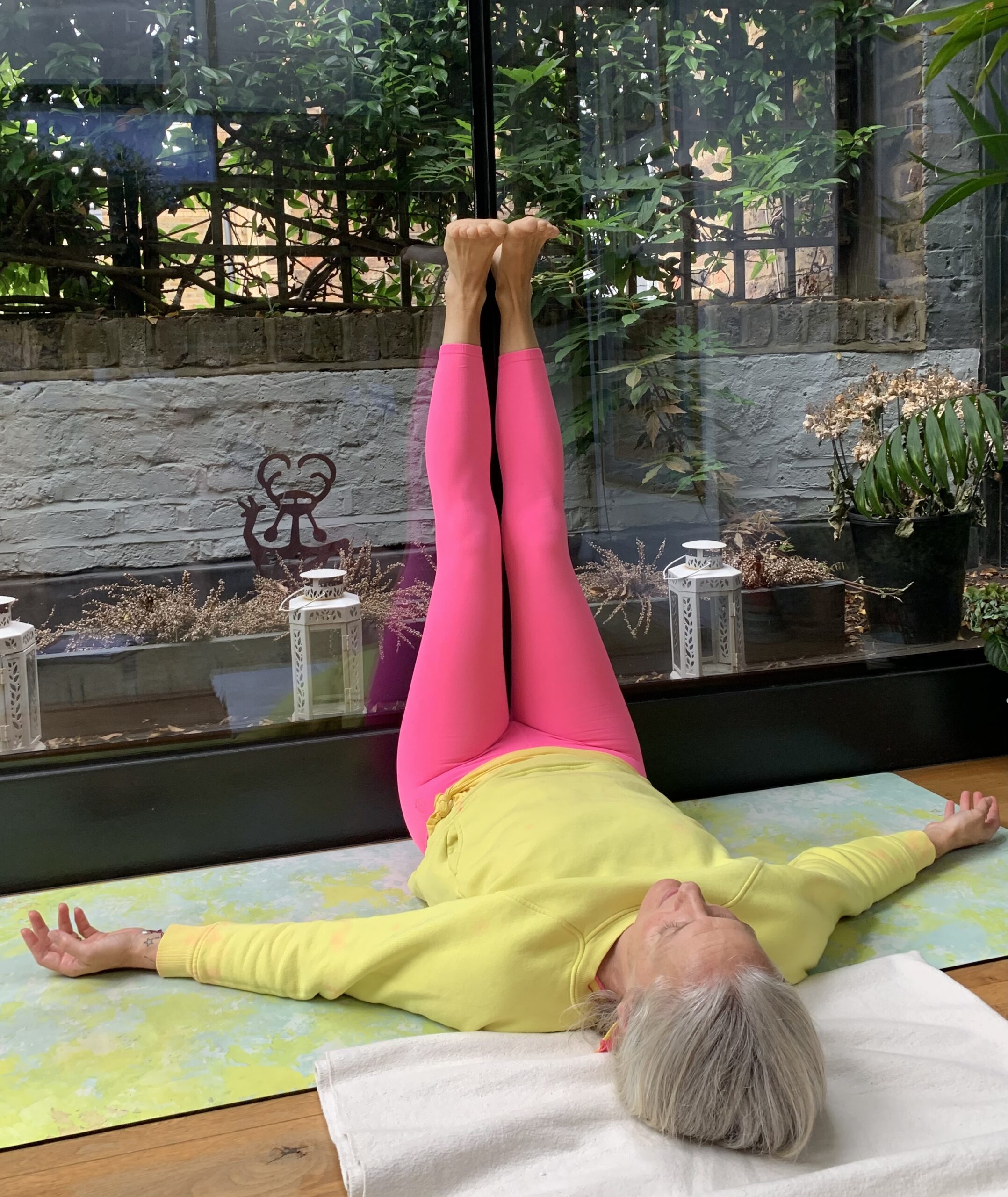
This blog was written by Carolyn Garritt, author of ‘Get your oomph back, a guide to exercise with a cancer diagnosis’ and Vicky Fox, author of ‘Yoga for cancer, an A to Z’.
Lymphoedema is the term given to swelling that can occur as a result of fluid building up within our lymphatic systems. These systems can be disrupted by cancer surgery and/or radiotherapy, or by cancer cells that are in the lymphatic system itself. Normally our lymph nodes take waste fluids and move them on to be expelled by the body as urine, however if these nodes have been damaged or removed through cancer treatment, the fluid can become blocked as its transport system isn’t working properly.
Physical activity can help
Many people, both those experiencing lymphoedema and those who know it’s a risk for them, don’t realise that exercise can really help – both in reducing our risk of developing lymphoedema, and in helping to manage symptoms. In particular, we want to recommend three types of exercise to you – yoga, Nordic walking and strength training.
Breathe. Stretch. Yoga for lymphoedema
Yoga is beneficial to the lymphatic system as it focuses on breathing fully. When we are breathing fully and using our diaphragm (our main breathing muscle) to breathe, this helps to move the lymph fluid towards the heart. The lymphatic system is one-way (from the periphery of the body to the centre) and the lymph doesn’t have a heart to pump it, so it functions better when it has this help. Well we all function better when we are supported, don’t we? Our diaphragm moves up and down when we are breathing fully, and this massages our system and encourages fluid to move.
Gravity is also a fabulous support that we don’t often think of. Anytime we raise our arms or legs above our heads we help the movement of lymph fluid back towards the heart. You don’t need to be super bendy to do this though – we normally work on elevating the legs when we are lying down on our backs. You can access gravity and use it to your advantage by, literally, putting your feet up.
In yoga we often work dynamically, moving the limbs in and out of poses, to also create a kind of pumping action so parts of our body get slightly squeezed (muscles contracting) and then released when we come out of the pose. This internal pump encourages movement inside the body of blood and lymph fluid, so it helps to move fresh blood into an area of the body and take toxins and dead cells away from an area.
Yoga poses also look at releasing scar tissue or areas of tightness in the body that may be as a result of surgery or radiotherapy. Scar tissue can act like a gate restricting the movement of fluid in the body. This is especially important if lymph nodes have been removed and there is a sort of “dead end” where the fluid is no longer being filtered by the lymph node. By stretching and releasing out these tight and restricted areas we help fluid like the lymph flow and not get stuck. This may just help to reduce some of the pressure felt in the arms or legs affected by lymphoedema or it may just make those areas of the body easier to move and less uncomfortable.
Vicky’s favourite pose to get everything moving
Lie on your back, legs and arms reaching towards the ceiling and then make a fist with your feet and hands (so you make them as small as you can) then widen your feet and hands and open them up to make the biggest foot/hands that you can. Repeat a few times to stimulate the hands and feet and encourage movement of fluid from the outer edges of the body back towards the centre of the body.
Then try adding onto this flexing and pointing the feet and hands. This creates a pumping action which helps to move fluid back towards your heart. If you do it you will feel the muscles in the forearms and shins working and these muscles are really important to help with movement. Muscles squeeze and then release which stimulates movement of blood and fluid and can be really helpful with lymphoedema.
Vicky says: ‘Yoga can give you a sense of being empowered because yoga is something you do for you. No one can do it for you. You are in control and can explore what works for you, so you are the co crafter of your wellbeing’
Swing – go Nordic walking
Nordic walking – using poles similar to hiking poles, is a clever and likeable form of exercise. As you walk, you swing your arms and pump your fingers, and these actions are believed specifically to reducing swelling.
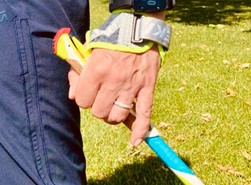
There’s good evidence around its efficacy: Jonsonn (2013)[1] found that swelling (in the arm) ‘was significantly reduced after an 8 week programme of Nordic walking 3-5 times a week’. Di Blasio[2] went further and recommended that Nordic walking ‘should be prescribed to prevent the onset and to treat light forms of upper limb lymphoedema’.
Carolyn’s personal experience mirrors the evidence: she has mild lymphoedema, swelling that comes and goes. It is normally much less noticeable, and feels less tight, on days that she has used her Nordic poles. She teaches it to all of her clients.
Nordic walking is also a highly sociable outdoor activity that you can do surrounded by nature. What’s not to love?
Lift. Strength training is safe
It is emphatically recommended that people experiencing cancer related lymphoedema use exercise to build strength in the area affected. Until relatively recently the advice given was frequently to the contrary, and people with symptoms would be advised to avoid lifting completely.
Dr Kathryn Schmitz, previously Chair of the American College of Sports Medicine led the field in understanding the impact of strength training on lymphoedema. She[3] challenged traditional thinking by conducting a trial in which women with lymphoedema followed a progressive weightlifting training programme. Yep, weight lifting – heavy ones. The trial found that, contrary to some expectations, progressive weightlifting didn’t make swelling worse. They also found that participants had fewer flare ups, reduced symptoms, and increased strength.
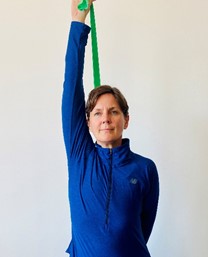
Later Nelson[4] reported ‘strong evidence that resistance exercise produces significant gains in muscular strength without provoking lymphoedema’.
What do we mean by strength exercises? Carolyn says
‘Your best bet is a combination of moves that use several of our big muscles together – squats, lunges, climbing up steps. Then add exercises that work the limb or area affected. So, for breast related lymphoedema, I’d recommend using a resistance bands or hand weight to do shoulder press, triceps press, bicep curls, etc.’
Part of the benefit of exercising, of course, is around how it can make you feel, how it can improve your mood and make daily life feel better and more manageable, both physically and mentally.
Before you start
There are, of course, some precautions to bear in mind. Although they’re not the most comfortable, if you have a compression garment for the area that swells (sleeve, tights, vest etc), you are encouraged to wear it during exercise. It’s also recommended that you stay well hydrated before, during and afterwards, and that you look out for any changes in the affected area.
If you were given exercises to do by your clinical nurse specialist or oncology/surgical team, then do refer back to them to look for any specific advice that you were given personally.
If you become tired while exercising, stop. It’s one thing to work hard and push yourself, but another consistent message that we both hear in our chosen fields is that being active after a cancer diagnosis, and especially with lymphoedema, is best done slowly, gently, progressively.
Avoid exercise if you have cellulitis. Avoid strength exercises if you’ve had surgery in the last 8 weeks.
If your affected limb/area becomes heavy or more swollen quickly, or if you are experiencing pain, do seek the advice of your specialist nurse, physio or doctor.
Whatever exercise you’re going to do, our best advice is to
- Restore your range of motion first before building back strength
- Learn good technique so you do it well. This is essential to prevent injury and so that you can feel confident in what you’re doing
- Take baby steps so that you build back strength slowly
- Be progressive. Keep a note of what you’re doing and how it makes you feel. Allow yourself to build up gradually
- Be kind to yourself. It’s easy to judge and to look at what you used to be able to do and feel frustrated. Notice even your frustrations with a sense of a smile. Vicky says ‘Being kind is practicing yoga.
And now to relax
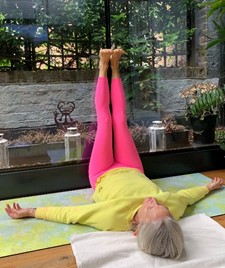
Vicky’s favourite pose to relax into is lying with legs up the wall or legs over a chair. This is a splendid example of how you can achieve something by doing nothing. Just by elevating the legs gravity helps to move fluid back towards the heart. You can relax and be a human being (not a human doing) and let gravity do all the work.
More support for those with lymphoedema
Check out the Lymphoedema Support Network as an excellent place for well-qualified, clinical advice on all forms of lymphoedema.
If you have lymphoedema in a place that you can reach, you may find some relief by learning appropriate self-massage techniques. Dr Kelly Reed is an oncology specialist physical therapist and lymphoedema guru. She has a richly-stocked YouTube channel called Cancer Rehab PT that you may find helpful.
Importantly though, if there’s anything that is currently concerning you about your own symptoms, please talk to your specialist nurse, or oncologist.
‘Yoga for cancer, an A to Z’ by Vicky Fox will be published by Hammersmith Health Books in May 2022
Carolyn Garritt’s ‘Get your oomph back, a guide to exercise with a cancer diagnosis’ is available through Hammersmith Health Books now.
[1] The effects of pole walking on arm lymphoedema and cardiovascular fitness in women treated for breast cancer: a pilot and feasibility study, Jönsson & Johansson, 2013, Physiotherapy Theory and Practice Vol 30, 2014 – Issue 4
[2] Nordic walking and the Isa method (2016), Di Blasio, Breast Care 2016;11:428-431
[3] Weight lifting for women at risk for breast cancer-related lymphoedema: a randomized trial (2010) Kathryn H Schmitz et al JAMA 2010 Dec 22;304(24):2699-705
[4] Journal of Strength and Conditioning Research, Volume 30, Number 9, September 2016,2656-2665
